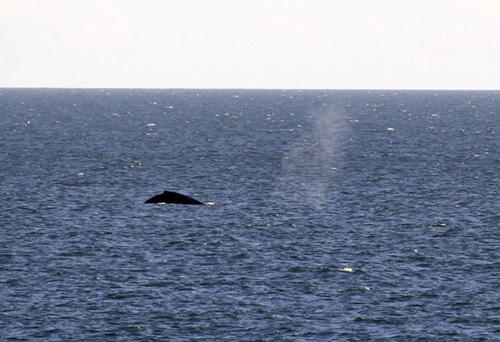A humpback whale sounds off Jennette's Pier.
It’s early winter on the Outer Banks and the humpback whales are back. We don’t have every day sightings and they certainly are not as common as dolphins, but every year, just about this time, humpback whales are seen passing off shore. If you're looking for a place to stay in the Outer Banks, we recommend booking one of our oceanfront Outerbanks vacation rentals where you may be able to spot a whale! As it turns out, scientists have a pretty good idea of where they came from and where they’re headed.
The whales off the North Carolina coast are a group federal officials call the Gulf of Maine stock. Getting an accurate count on whales is tricky, but estimates put the population of that group between 900 and 1000. The whales are headed south. Females give birth in the Caribbean and spend the winter raising the calves in the warmer waters. Feeding on krill, small fish and plankton, for migrating pods of whales, the waters off the Outer Banks are an important feeding ground.
Humpback whales will eat up to a ton and a half of food daily. Although there are other species of great whales, whales longer than 30’, that migrate past North Carolina, the humpback is the most likely to be seen. Athletic—it’s hard to miss a 30 ton, 40’ creature leaping from the sea— and preferring to swim close to the shore, the Eastern Atlantic humpback population has been recovering and it is not as rare as some of the other species.
If no whale is seen during the winter, there will be another chance to get a look at them later in the year. Humpbacks return to their Gulf of Maine home in early spring. Book one of our Outer Banks vacation rentals during the winter or spring and you have better chances of spotting a whale!

